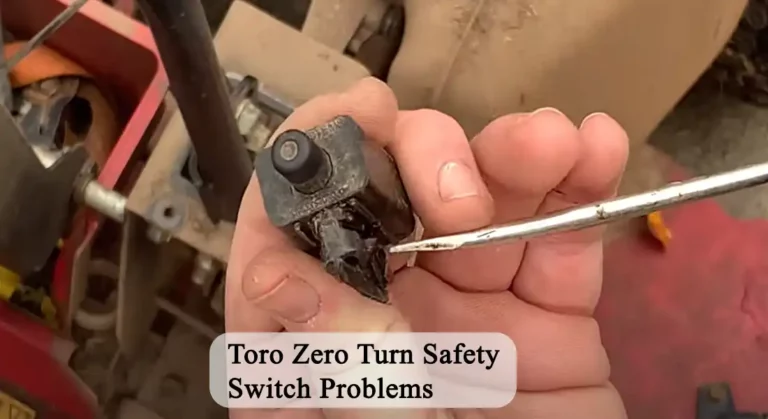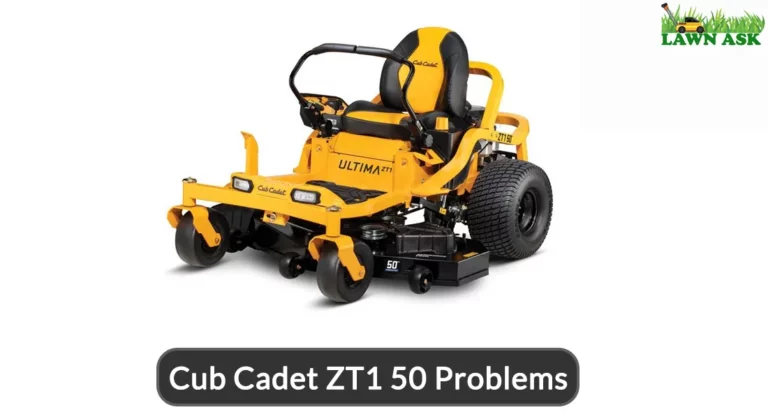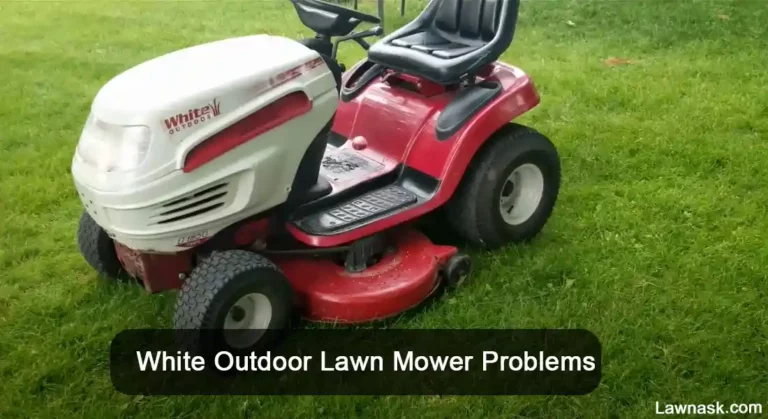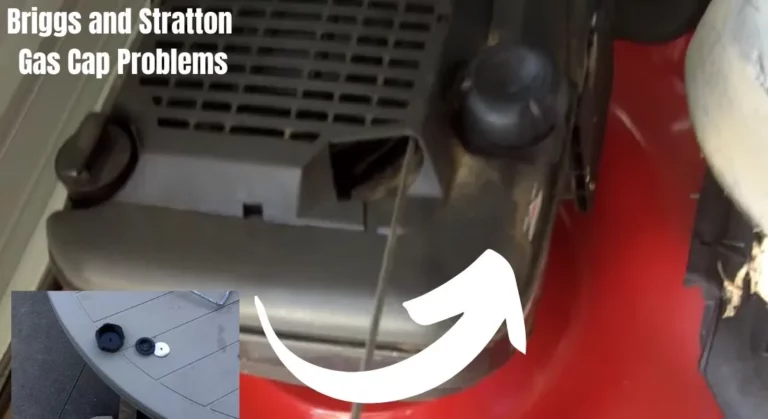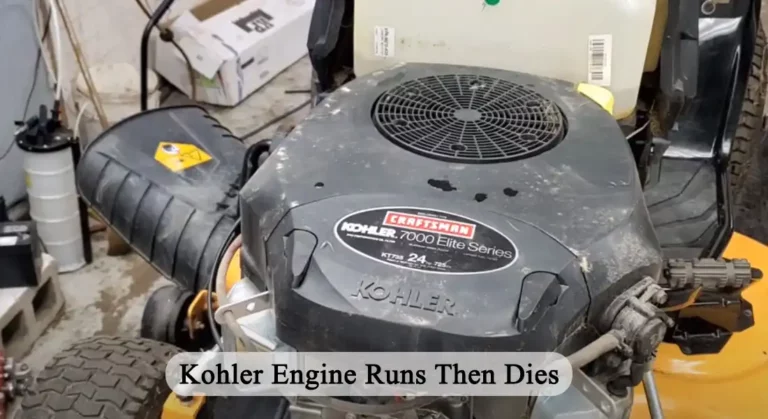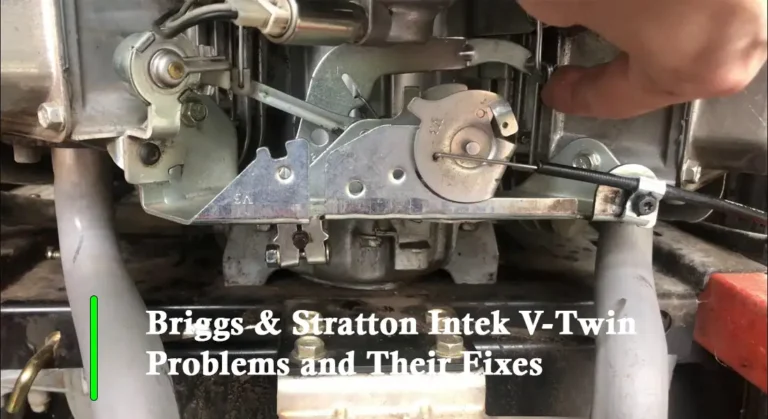Why Does My Lawn Mower Cut Unevenly?(Causes+Solutions)
Uneven lawnmower cutting can be frustrating, especially when you don’t know what went wrong and how to fix it.
Worn-out decks, poor deck adjustment, damaged wheels, and dull or worn-out blades are the most typical causes of uneven lawn mower cutting. But there are other potential reasons to lead your mower to cut unevenly.
This article will explain all potential reasons of lawn mower cuts unevenly and how to fix the problem with simple steps.
So, continue reading.
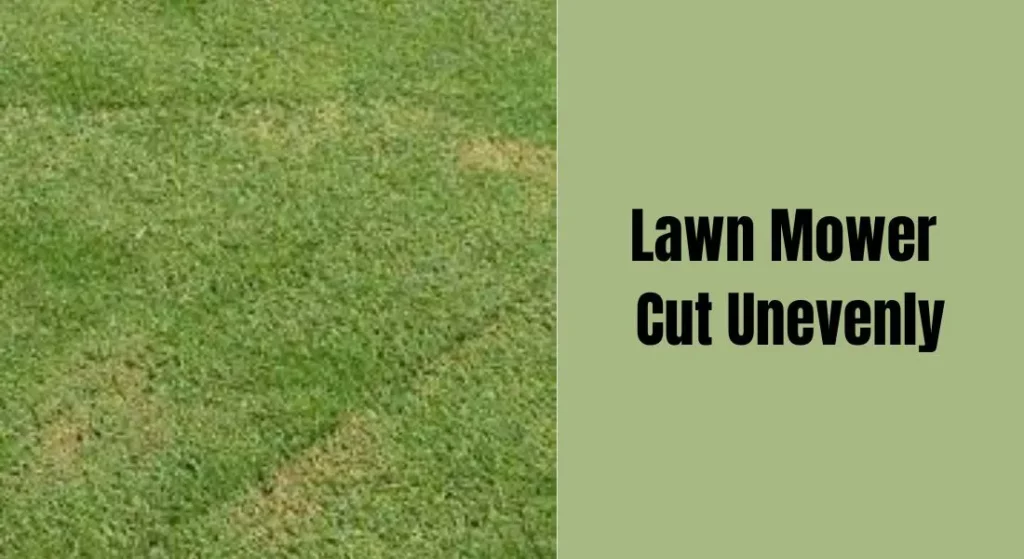
What Causes a Lawn Mower Cuts Unevenly?
If your lawn mower is cutting unevenly, there are a few potential causes that you should consider:
1. Deck Is Not Leveled Correctly:
If the mower deck is not level, the blades will cut grass at varying heights, resulting in an uneven cut.
Signs: You may notice that the mower leaves uneven stripes or that the cut is uneven in some areas of your yard.
Reasons: The deck can become unlevel due to_
- Using the mower on uneven ground or surfaces,
- Defective deck wheels or the deck itself,
- Loose or damaged deck mounting bolts or the blade,
- Incorrect adjustment, or
- Unintentionally adjusting the deck due to a lack of knowledge.
2. Deck Is Blocked with Grass Clippings:
If the mower deck is clogged with grass clippings, it can cause the blades to cut grass at different heights, leading to an uneven cut.
Signs:
- Besides uneven mowing, restricts the flow of grass clippings.
- Mower takes longer to cut grass, leaving uncut patches.
- Grass piles on the deck or under the mower.
- Excessive vibration & overheating.
Reasons: The deck can become clogged due to_
- Mowing wet grass or grass that is too long, or
- Failing to clean the underside of the mower deck regularly.
3. Dull or worn Blades:
When the blades on your lawn mower become dull or have wear and tear issues, they can leave areas of grass uncut, giving your lawn an uneven appearance.
Signs: Signs of dull blades include:
- A rough or uneven cut,
- The grass looks torn rather than cleanly cut, and
- The frayed appearance of grass blades.
Reasons:
- Due to normal wear and tear from use,
- Hitting rocks or other hard objects while mowing, or
- Improper maintenance, such as failing to keep the blades clean and free of debris.
4. Unevenly Adjusted or Damaged Mower Wheels:
If the wheels on your lawn mower are poorly fitted or damaged, the mower will chop grass at uneven heights, giving your lawn an uneven appearance.
Signs:
- Poor performance.
- Difficulty in steering the mower during turns.
- The wheels may appear to wobble or shake while mowing.
Why?
- Normal wear and tear,
- Hitting an object while mowing,
- Stored in an area with high humidity or severe temperatures,
- Using the mower on a too-rough or uneven terrain.
5. Blades Are Damaged:
Damaged blades can cause the mower to cut grass unevenly or not at all.
Signs:
- Uneven or ragged grass,
- Excessive noise and vibrations,
- Reduced mowing efficiency, and
- Bent or chipped blades.
Why?
- Hitting hard objects, such as rocks, tree stumps, or metal debris while mowing.
- Due to being old or normal wear and tear from mowing,
- Failure to sharpen or balance the blades regularly, or
- Exposure to moisture can cause blades to rust.
6. Incorrect Tire Pressure:
If the tire pressure is not balanced, the mower may cut unevenly. This can cause some portions of your grass to be shorter or longer than others.
Signs:
- Difficult to steer the mower and feel heavy or sluggish, especially when turning.
- Excessive vibration in the mower.
- Cracks, bulges, or other signs of wear and tear on the mower tire/s.
Reasons:
- Due to normal wear and tear,
- Temperature fluctuation,
- Improper storage or
- Inappropriate tire inflation.
7. Blades Are Installed Incorrectly:
Your lawn may have inconsistent cuts if the blades are not positioned at the right angle or length. As a result, some parts of your lawn may be shorter or longer than others.
Signs:
- Excessive vibration in the mower deck, which can be felt through the steering wheel or handles.
- Struggles to cut through thick or tall grass or takes longer than normal.
- Hearing strange noises, such as grinding, rattling, or scraping sounds.
Why?
- Due to a lack of knowledge or not following the manufacturer’s instructions thoroughly,
- Bolts are not tightened correctly while installing,
- Installing the blades upside down or
- Choosing the wrong type of blades.
Related Post: Is It Worth Sharpening Lawn Mower Blades?
How to Fix a Lawn Mower Cuts Unevenly? (Step-By-Step Method)
If your lawn mower is cutting unevenly, here is a step-by-step method to help you fix the issue:
Step-1: Make sure your mower tires are inflated at the correct PSI by checking the max PSI printed on your mower tires or desired PSI mentioned on the user manual of your mower.
Locate the tire valve cap and get a digital pressure gauge to check each tire’s pressure. So, put the pressure gauge on the valve and press it down.
Similarly, check the PSI rate of the other tires.
If the pressure gauge monitor reads less than the acceptable PSI on one or both tires, Keep refilling to Inflate the front & rear tires until they reach the recommended PSI.
Step-2: Place your mower on a flat surface and lift the deck to its highest setting. Then, shut off the mower engine to check the deck-leveling on your mower.
Note: Leveling the mower deck in this case, means balancing the blades of your mower.
Before that, check whether the deck is damaged or has a wear and tear problem. Replace the mower deck if necessary.
Step-3: Maintain a straight line with your mower blades and measure the distance between the front tip of the blade and the ground. Then, measure the distance between the back tip of the blade and the ground in the same manner.
The front tip should be a quarter of an inch or 3/8 of an inch lower than the back tip. If the measurement does not show that, you need to adjust it.
Then, measure the non-suit side and if the measurement is not within 1/8 to 12 inches, adjust and level your mower deck by following these easy steps:
Step-4: Go underneath your mower deck and check whether it’s dirty or whether the buildup of debris has restricted the airflow.
If that is the case, clean the inside of your mower deck with a mower scraper, deck cleaning tool, or flathead screwdriver to keep it free of impacted clippings.
Tips: Be careful not to damage the bottom of your mower deck during the cleaning process.
Step-5: Tilt your mower to access the blades and check for any loose connections or dirty blades.
If the blades are loose, take off the bolt that secures the blade in its position and the self propel pulley.
Then, hold a wrench up to the shaft and crank your mower to look for any sign of wobbling.
Now inspect if the shaft is bent or straight as it is supposed to and if the shaft is bent, straighten it with a pipe. If the shaft is fine, clean the blade securing bolt and put some Loctite on it before putting it back on.
Clean your mower blades if they are covered with built-up dirt.
Step-6: Check if any of your mower blades are bent by spinning them one by one.
If you see them parallel, that means they are good to go. But if all or one of them looks bent, use a hammer to straighten the bent side.
Make sure blades are not set upside down and are correctly installed. Replace the blades if they are severely damaged or worn.
Step-7: Check if your wheel adjustment settings are the same for all your mower wheels and if not, correctly set your mower deck or anti-scalp wheels.
Check your mower’s user manual to learn how to calculate passes and cut the grass in perfect time to avoid overlapping.
Related Post: What Is A Mower Blade Balancer Used For?
FAQs
Why is there a strip of grass between my mower’s blades?
If the blades are uneven or wrongly mounted, you will witness strips of uncut grass left in the center of rows when mowing.
Should the deck of a mower be completely level?
Yes. A lawn mower deck should have a pitch of 1/8-1/2 inch between the front and back for the best results, with a sweet spot of 1/4 inch.
What setting should I use on my lawn mower to cut grass?
Mowing the grass at 3 inches or higher is advised to prevent illness and promote deep digging roots. It will help save water and improve turf density and color.
What causes my mower to leave high spots?
A slow-running mower engine could generate high spots
Related Posts:

